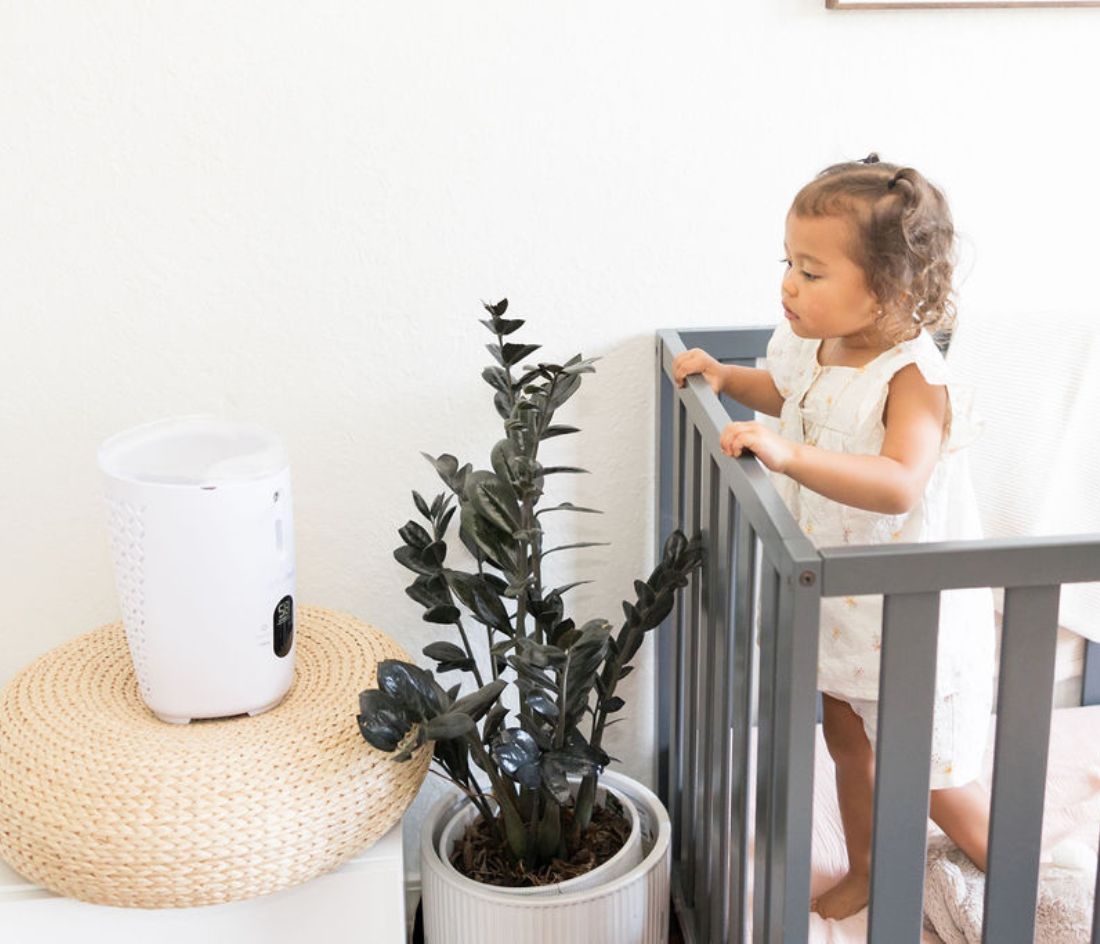Guest Post by Katy Fleming, MA, LPC, BSN, RN
When your child cannot communicate their pain, it’s a challenge to figure out the problem. If your infant isn’t acting like themselves, it’s essential to determine the source of the problem.
5 out of 6 children will experience at least one ear infection by their third birthday. Since children have such small eustachian tubes, they aren’t able to effectively drain their ears. These are the tubes connecting our ears and nasal-sinus cavity.
Let’s review the expected symptoms and how it manifests in infants, so you can better spot an ear infection in your baby.

How to Spot an Ear Infection in a Baby
There are different types of ear infections, however, middle ear infections occur most often. Also known as acute otitis media, middle ear infections result from bacteria such as streptococcus pneumoniae and viruses.
Ear infections commonly follow after a child has a cold or upper respiratory infection. Due to their developing immune systems, babies aren’t as equipped to fight off infections.
Check out the most common symptoms of middle ear infections below and what to look for in your baby.
Symptoms of an Ear Infection
Pain
Fluid gets trapped behind the eardrum in acute otitis media, which is painful. Remember the eustachian tubes we discussed earlier? They’re not only smaller in infants, but become swollen when infected. These factors result in fluid build-up leading to serious pain and discomfort for your little one.
Your baby may begin to tug or pull on their ears as the pain increases. Expect more irritability and fussiness. When an infant is experiencing pain, they may not sleep or feed as well.

Fever
Fever occurs in approximately 50% of children with ear infections. It’s a sign of the body’s immune system fighting the infection.
A fever is considered 100.4°F or 38°C. The easiest way to take an infant’s temperature is on their forehead (temporal), however, rectal is the most accurate.
If your child is younger than 3 months old, call the doctor with any fever of 100.4°F or higher. However, for children 4 months or older, you don’t need to contact the doctor until 102.2°F or 39°C.
When experiencing a fever, your baby may feel hot to the touch and appear flushed, although this is not always the case. Typically, you’ll see behavioral changes as discussed earlier such as increased crying, irritability, and fussiness. Your baby may be more sleepy and feeding less.
Difficulty Hearing
When fluid builds up in the ear, it’s not only painful but difficult to hear. It’s certainly much easier to figure out when an adult isn’t able to hear you than infants.
Keep in mind, babies usually begin turning their heads to a sound by the age of 6 months. If your child typically responds to sounds and is no longer turning their head to noises, this may be an indication that they’re unable to hear as well.
If coupled with other signs of infection, this could lead to suspicion of a middle ear infection.

Quick Symptom Check
Here’s an overview of the signs and symptoms of a middle ear infection in a baby:
- Tugging or pulling at the ears
- Fluid coming out of their ears
- Increased irritability or fussiness
- Warm to the touch and appears flushed
- Stops responding to sounds
- Decreased feedings
- Increased sleepiness or drowsiness
- Difficulty sleeping
Mild symptoms are often relieved on their own. If symptoms persist for 2-3 days or more, then the pediatrician may need to prescribe an antibiotic.
Keep in mind that children 6 months or younger should only receive acetaminophen. Ibuprofen shouldn’t be given until 6 months or older and aspirin should never be given to children.
Do not stick a cotton swab or your fingers into your child’s ears. If your child is exhibiting symptoms of an ear infection, call your pediatrician.
At some point, most of our babies will experience a middle ear infection. Learn more from your child’s pediatrician and remain on the lookout for these symptoms!
Looking for more information on ear health? You'll love these:
- 5 Causes of Ear Pain
- Ear Inflection Home Remedies
- 5 Things to Know About Ear Tubes
- Can I Use a Nasal Aspirator in the Ear?
- Importance of Back to School Hearing Screenings
As a licensed counselor and registered nurse, Katy approaches freelance writing with years of experience and a unique perspective. Alongside her partner, Katy loves to travel the world and embrace other cultures from volcanoes in Iceland to villages in India.
The Nozebot is a battery-powered suction device designed to clear nasal congestion in babies and children.



